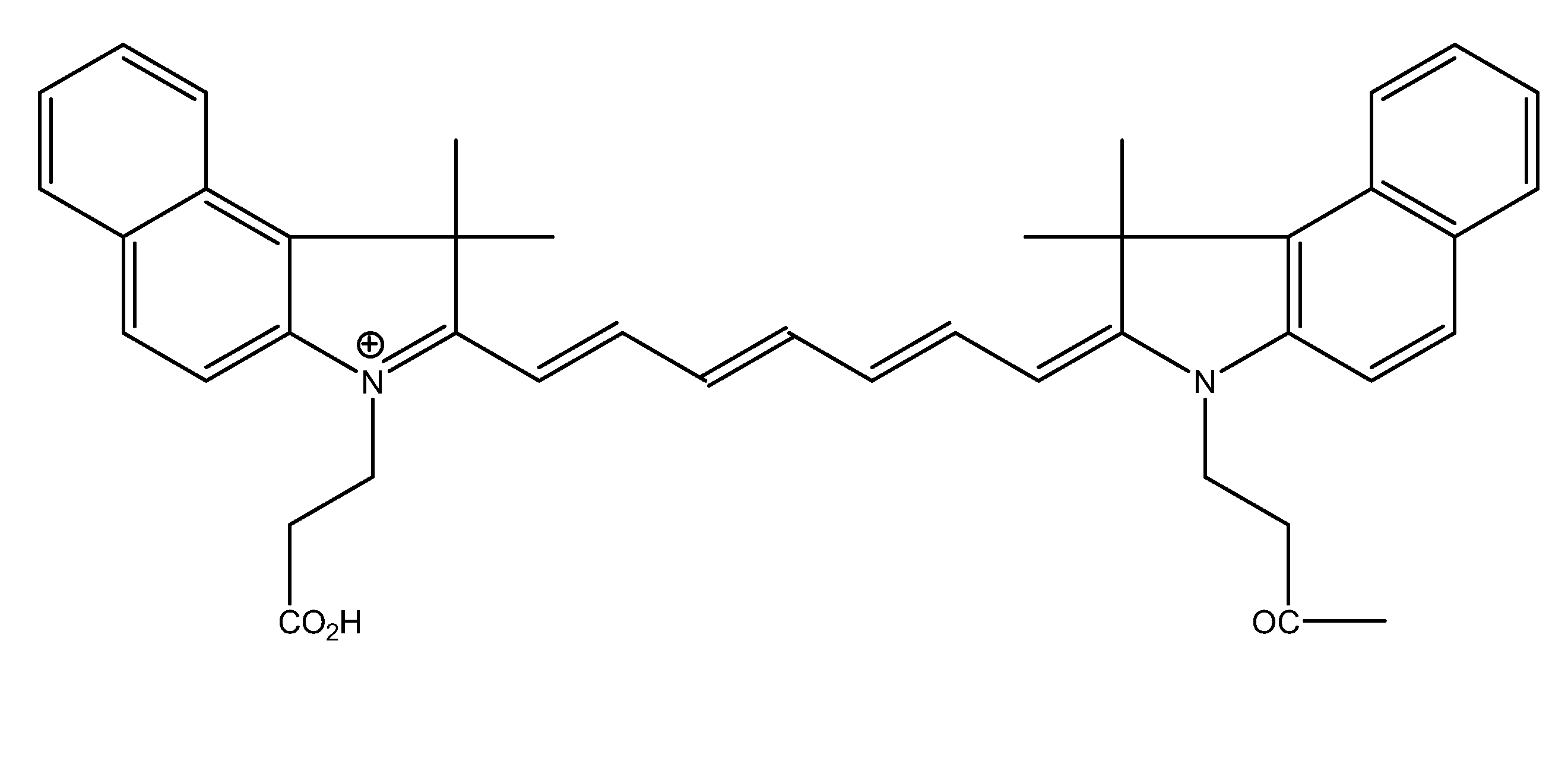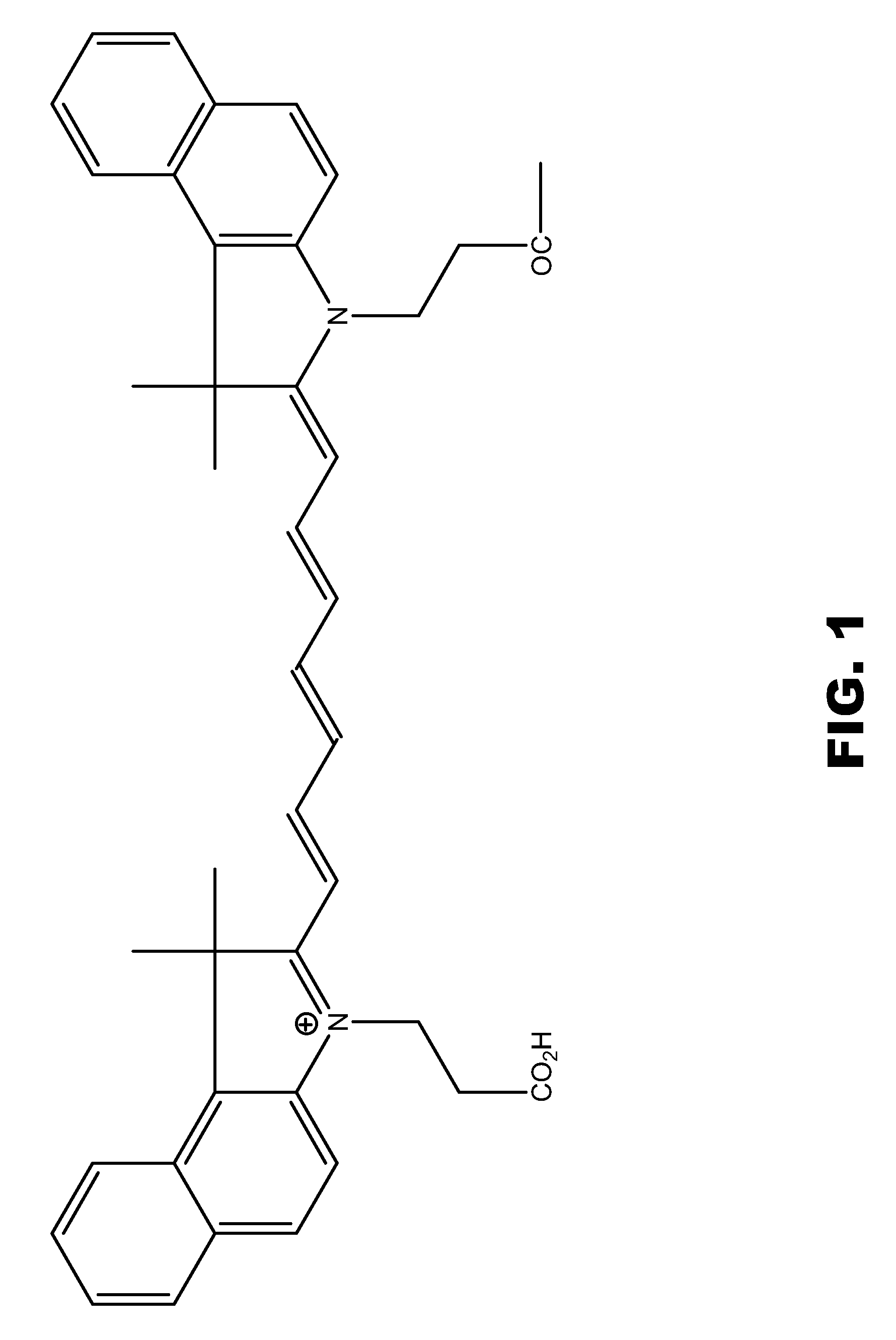Compounds having rd targeting motifs
- Summary
- Abstract
- Description
- Claims
- Application Information
AI Technical Summary
Benefits of technology
Problems solved by technology
Method used
Image
Examples
example 1
Synergistic Effects of Light-Emitting Probes and Peptides for Targeting and Monitoring Integrin Expression
[0102]Angiogenesis, the formation of new blood vessels, is the cardinal feature of virtually all malignant tumors. Because of this commonality, probing tumor-induced angiogenesis and associated proteins is a viable approach to detect and treat wide range of cancers. Angiogenesis is stimulated by integrins, large family of transmembrane proteins that mediate dynamic linkages between extracellular adhesion molecules and the intracellular actin skeleton. Integrins are composed of two different subunits, α and β, which are noncovalently bound into αβ complexes. Particularly, the expression of αvβ3 integrin (ABI) in tumor cells undergoing angiogenesis and on the epithelium of tumor-induced neovasculature alters the interaction of cells with the extracellular matrix, thereby increasing tumorigenicity and invasiveness of cancers. Numerous studies have shown that ABI and more than seven...
example 2
Design, Synthesis, and Evaluation of NIR fluorescent Cyclic RGD Peptides for Targeting Integrins
[0140]Biomolecules possessing the RGD peptide sequence are known to bind to the integrin family of cell-surface receptors. These receptors mediate a host of pathophysiological conditions in humans. For this reason, interest in the development of novel RGD peptides has increased in biomedical research. Most research efforts have focused on diverse linear and cyclic RGD peptides and their peptidomimetics. In particular, the cyclic RGD peptides are very attractive because the cyclization is known to improve binding affinity, selectivity, enzymatic stability, pharmacodynamics, and pharmacokinetics in vivo. In particular, the cyclic RGD pentapeptide, cyclo[RGDfV] [SEQ ID NO:1], and its analogues have received much attention because they bind integrins with high affinity.
[0141]Labeling these peptides with fluorescent dyes would provide a means to detect, localize, and monitor the functional sta...
example 3
Targeting β3 Integrin Protein with Fluorescent Labeled Linear GRD Peptides
[0156]Integrins are a large family of heterodimeric transmembrane proteins that mediate cell-cell and cell-matrix interactions. They play key roles in tumor invasion, formation of metastasis, and tumor-induced angiogenesis. These proteins associate as αβ heterodimers in their native environments, where the α and β subunits perform distinct but complementary physiological functions. Currently, eighteen α subunits and eight β subunits have been identified, with each β subunit associating with different α subunit. The β3 subunit has been shown to form αIIBβ3 and αvβ3 heterodimers. Because of its overexpression in many pathophysiological processes, anti-angiogenic drugs and tumor imaging agents have been developed to target αvβ3 integrin (ABI). The β3 integrin has been associated with a number of cancers, including prostate, breast and stomach, as well as melanomas. However, only a limited number of studies have t...
PUM
| Property | Measurement | Unit |
|---|---|---|
| wavelengths | aaaaa | aaaaa |
| wavelengths | aaaaa | aaaaa |
| depths | aaaaa | aaaaa |
Abstract
Description
Claims
Application Information
 Login to View More
Login to View More - R&D
- Intellectual Property
- Life Sciences
- Materials
- Tech Scout
- Unparalleled Data Quality
- Higher Quality Content
- 60% Fewer Hallucinations
Browse by: Latest US Patents, China's latest patents, Technical Efficacy Thesaurus, Application Domain, Technology Topic, Popular Technical Reports.
© 2025 PatSnap. All rights reserved.Legal|Privacy policy|Modern Slavery Act Transparency Statement|Sitemap|About US| Contact US: help@patsnap.com



